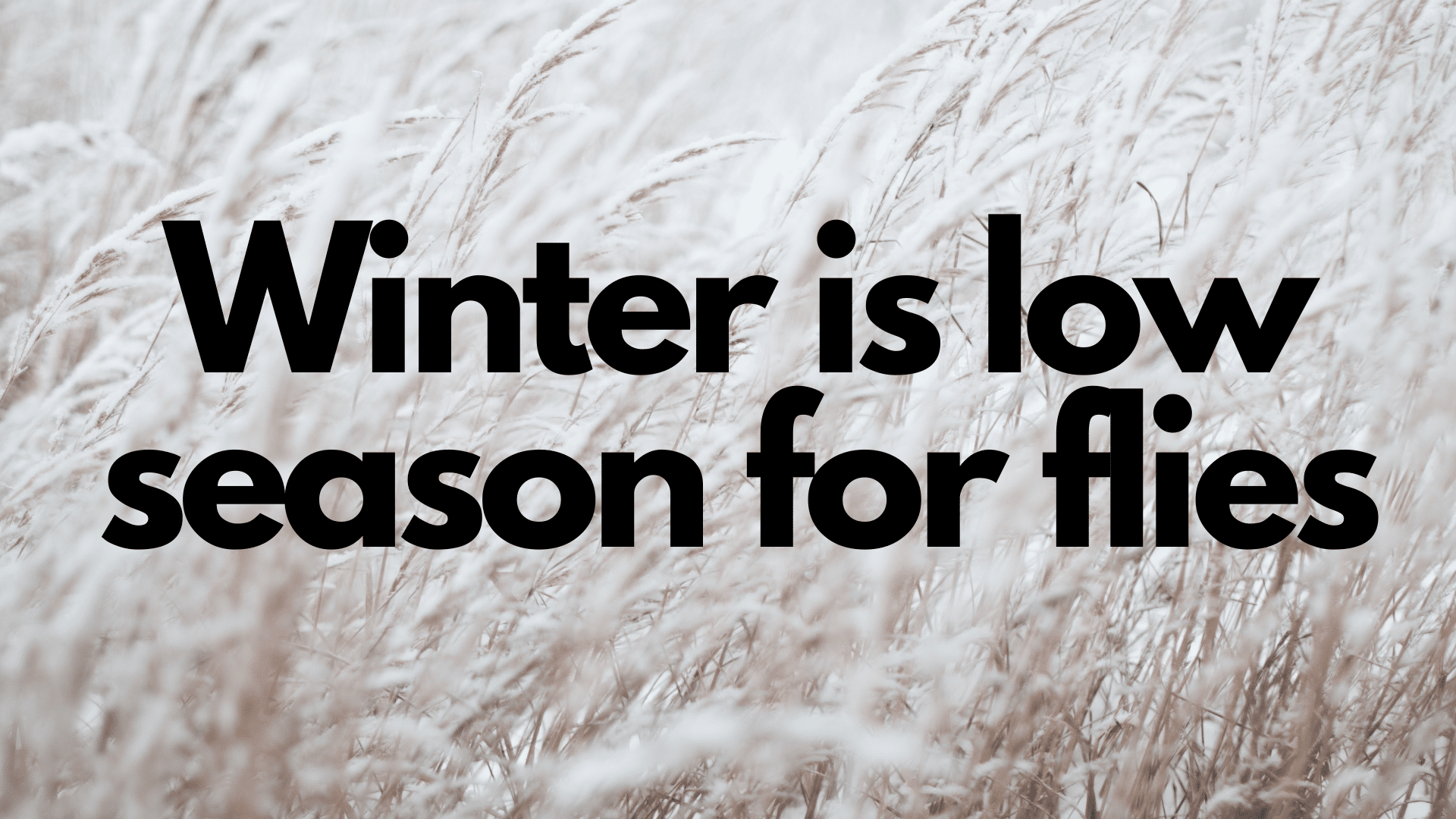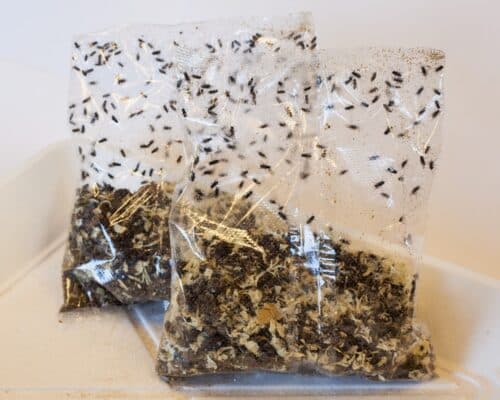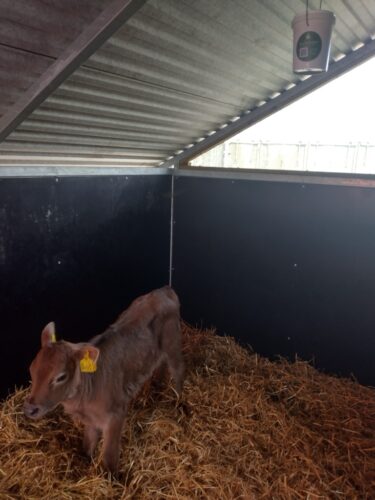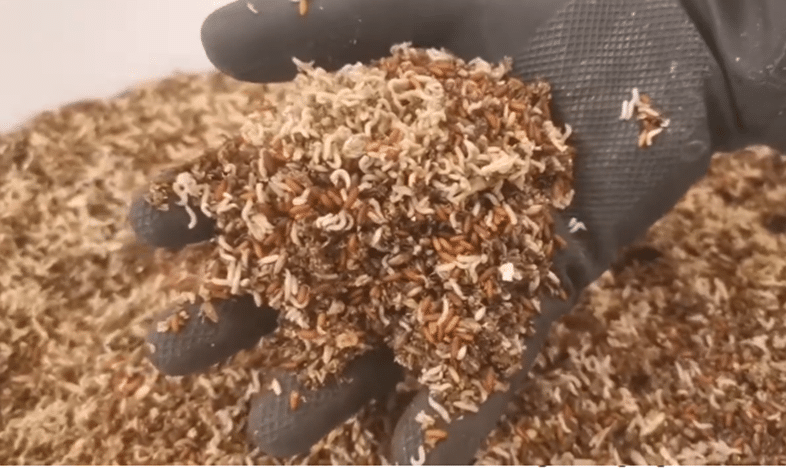Fall and Winter are low seasons for flies. It can be tempting to cut back on all the fly control work in the stables and enjoy the low number of annoying flies. But you would be wise to plan the coming year’s fly control in the Fall/Vinter, because once the heat comes in the new year so too will the flies be back.
As it gets warmer the flies reproduce more rapidly and what is called fly season is usually from March/April till October/November in Denmark. During the winter period the number of flies drops as the temperature does, and it is easy to forget how much unwanted flies can torment animals and humans in the stable.
Some people wait until spring to decide how to handle fly season because they “want to wait and see how bad it gets” but that can become expensive, you can read more about that in the articleLandmand og snart forår? Forbered dig til fluesæsonen nu.
It’s easier to prevent than to cure
As spring comes around, so does the word in the fields and time starts to run out for deciding on the fly control for the season. And if too much time passes and the unwanted flies manage to establish themselves in the stable, you will have to work much harder to bring the population under control. As a basic there are two strategies for getting control.
1. strategy: Treat the symptoms with fly poison
You can choose to control the grown flies as the emerge by using immediate agents such as fog sprays, for example Aquapy (Aerosol containing poison), or alternatively something like Agita which you can smear on your walls – Agita contains a sugary lure and has an immediate effect that can last for up to 4 weeks.
-
Pros:
- You will see results fast and the number of grown flies will be greatly reduced, this will be the case for either of the options
- Fog spray will have an effect on all types of flies and on all stages of the flies life cycle, meaning it will also kill larvae and eggs
- Painting with Agita can have an effect for upto 4 weeks after the treatment, if you pour water over the treated areas at regular intervals
-
Cons:
- It is important to follow the instructions on the agents to not endanger humans or hurt the environment as agents such as Aquapy are highly poisonous, and should not be inhaled or escape into nature. Anything that does end up outside the stable must be dealt with
- Research shows that having many generations of flies during fly season increases the risk that they build resistance to the agent and you may have to change brand to uphold the effect
- Smears can only be used on areas outside of the reach of the animals
- Fog spray has a short lasting effect and the agent has to be used often to keep the number of unwanted flies under control throughout the season
- Smears have no effect on biting flies as they are not attracted to sugar but blood
- Neither of the options can be used with organic livestock
- The treatment has to be repeated all of the fly season (according to the datasheet: Fog spray about 26 times a year, smears about 13 times
2. strategy: Preventative treatment with either fly poison or biological fly control
To actually get control of the flies and not just treat the symptoms of the problem, when the flies have already started hovering around the animals it is necessary to control the population before they develop from the larvae stage into flies
Prevention with poison
Before the start of the fly season, you can work preventatively using larvacids such as Neporex or Hokoes, both of which contain poison that targets the fly larvae. The agent is sprinkled or dissolved in water and watered along the edge of the box you want to treat. In stables with slatted floors and pig stables the entire surface of the floor must be treated.
-
-
-
Pros
- Effective treatment against house flies and biting flies
- Larvaecids have not shown any signs that the larvae can develop resistance
-
Cons
- No immidiate effect on grown flies. You could complement with a smear that has good effect against adult flies
- Effect lasts for about 14 days after first treatment
- Larvaecids cannot be used by organic farmers
- The treatment has to be repeated all of the fly season (according to data sheet: about 13 times
-
Pros
-
Prevention with biological fly control
If you choose to prepare for the fly season and want to spend minimal time and effort on fly control, then biological fly control may be the way forward for you. This treatment solution involves deploying predatory flies or mini wasps to the stable environment in early spring. Both of these are natural and effective enemies of the common house fly and the biting fly.
- Pros
-
- Effective against the common house fly and biting fly
- Subscription solution with a delivery plan for the fly season. The products are delivered directly to the stables when it’s time to deploy them
- Preventative and holistic solution for the whole fly season
- Minimal workload in the stable. The products are hung in complimentary buckets or added directly to the stable environment at recommended locations when they arrive
-
- No risk of anything developing resistance to the method
- can be used by organic farmers
-
Cons
- No immidiate effect on adult flies
- It takes about 4-6 weeks before the effect of the predatory flies and mini wasps really kicks off. This is why it’s a good idea to start using them before the fly season really gets going
- The treatment has to be repeated throughout the fly season (6-11 times – depending on the situation in and type of stable)
Predatory flies are used for controlling the population of other flies in pig and cattle stables. Its larvae eat the larvae of other flies. They are good for controlling the population of other types of flies in stables with for instance slurry channels. Source: Predatory flies by subscription. Miljøfluen
Mini wasps are a small group of wasps that breed by laying their eggs in the pupae of the flies. They are good for controlling the fly population in stables with deep litter bedding. They arrive in sealed containers to the stables. The wasps need to get into the bedding to find the fly pupae containing the unwanted flies. You can either spred the mini wasps in the bedding or place the opened container close to the area you want fly control in. Source: Mini wasps by subscription, Miljøfluen
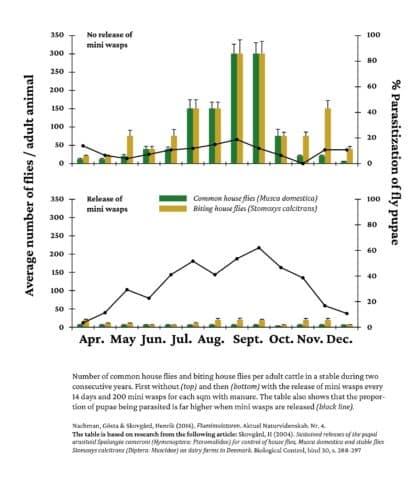
Deploy the predatory flies or the mini wasps in the stables in early spring before the heat sets in to keep unwanted flies under control from the beginning of the season. Start early with a few deliveries and experience that you can keep the number of unwanted flies low for the whole season.
Sources
Andersen, Tina (2022) Farmer, and spring is closing in? Prepare for fly season now. MILJØFLUENS DATABANK ABOUT BIOLOGICAL FLY CONTROL
Andersen, Tina (2021) Flies can develop resistance to fly poison (Insecticides) MILJØFLUENS DATABANK ABOUT BIOLOGICAL FLY CONTROL
Nachman, Gösta & Skovgård, henrik (2016) Fluesimulatoren. Aktuel Naturvidenskab. Nr. 4.
Skovgård, H. (2004) Sustained releases of the pupal arasitoid Spalangia cameroni (Hymenoptera: pteromalidae) for control of house flies, Musca domestica and stable flies Stomoxys calcitrans (Diptera: Muscidae) on dairy farms in Denmark. Biological Control, bind 30, s. 288-297
Miljøfluen (2023) Predatory flies by subscription. http://www.miljofluen.dk
Miljøfluen (2023) mini wasps by subscription. http://www.miljofluen.dk
